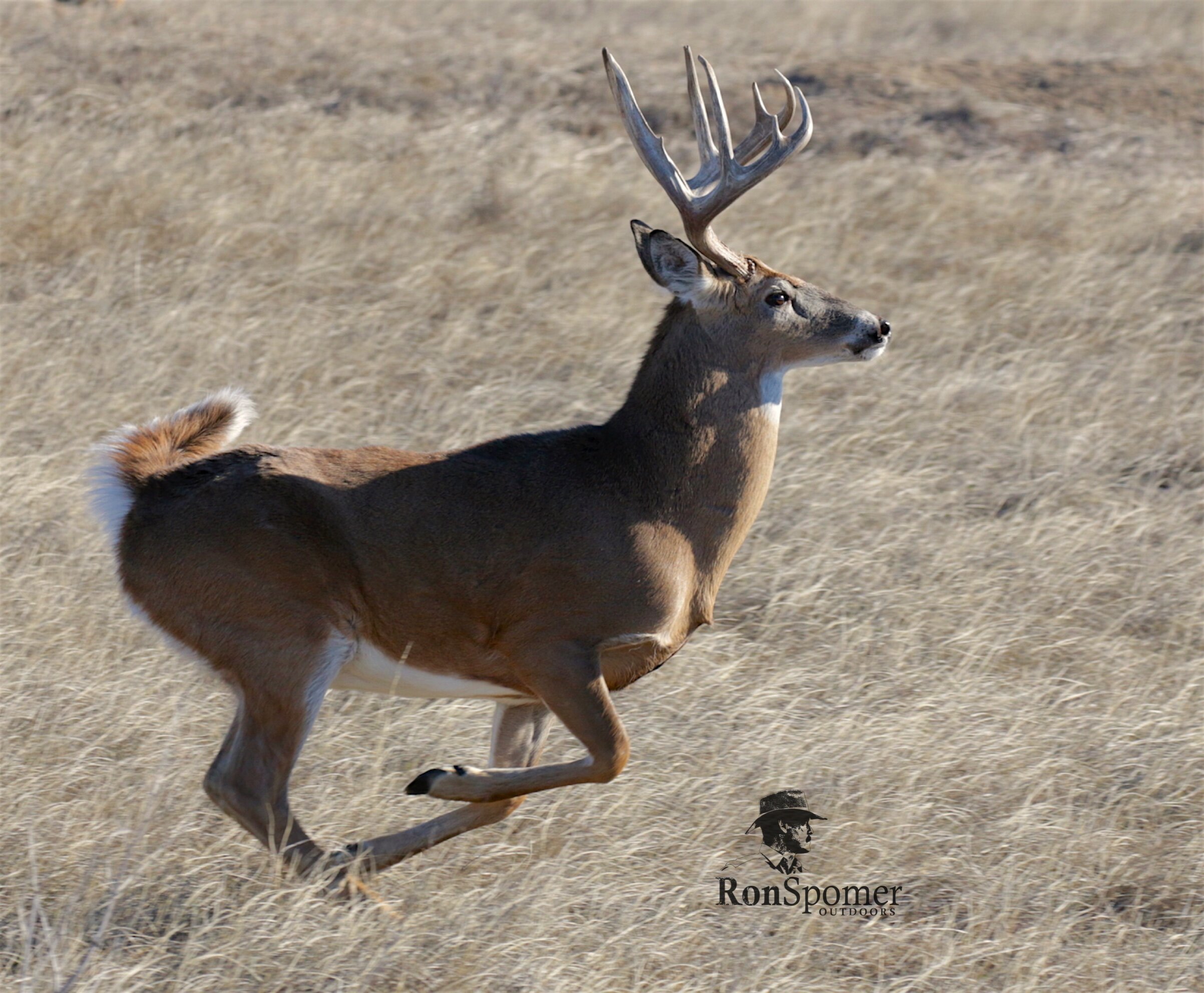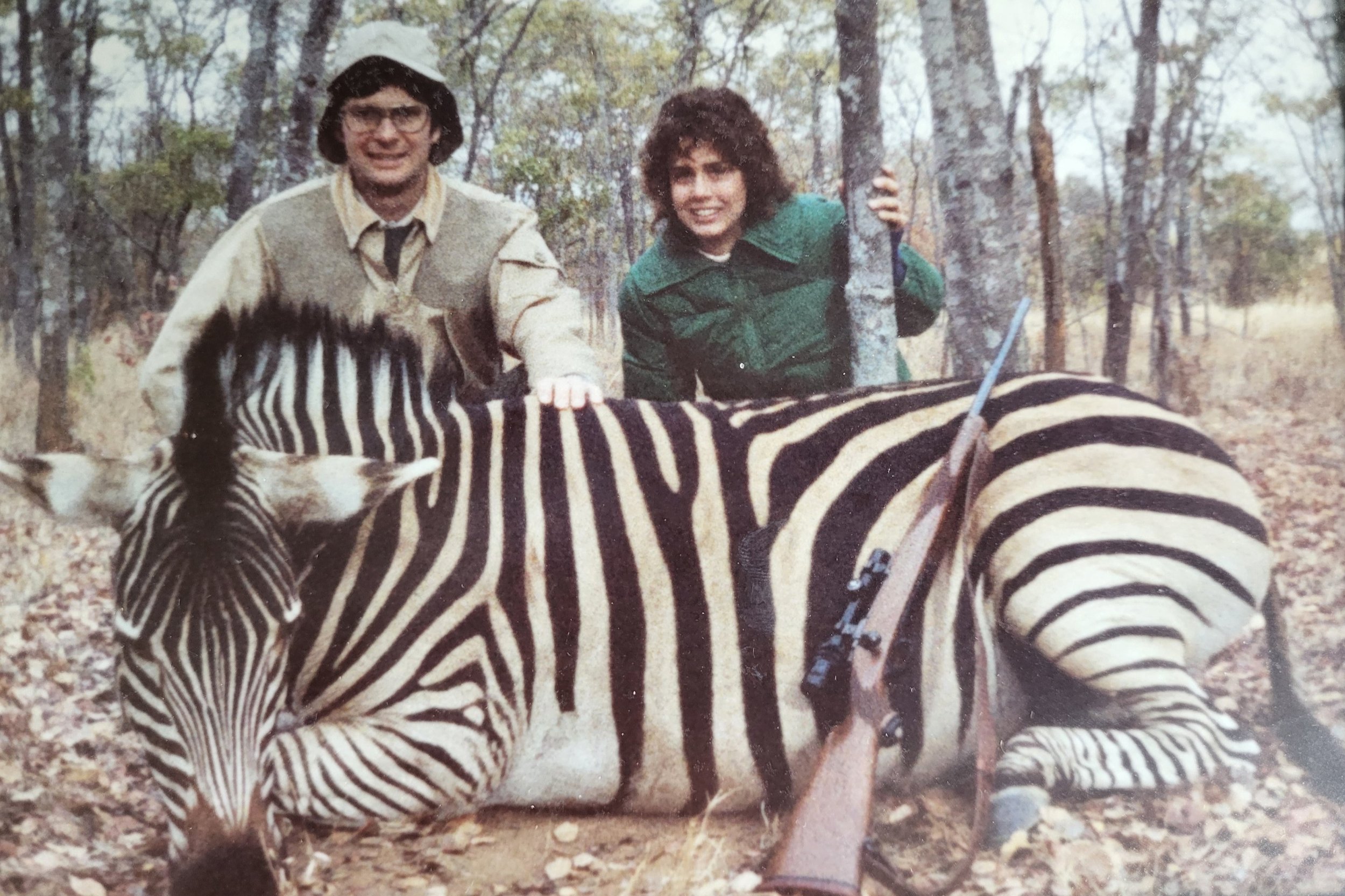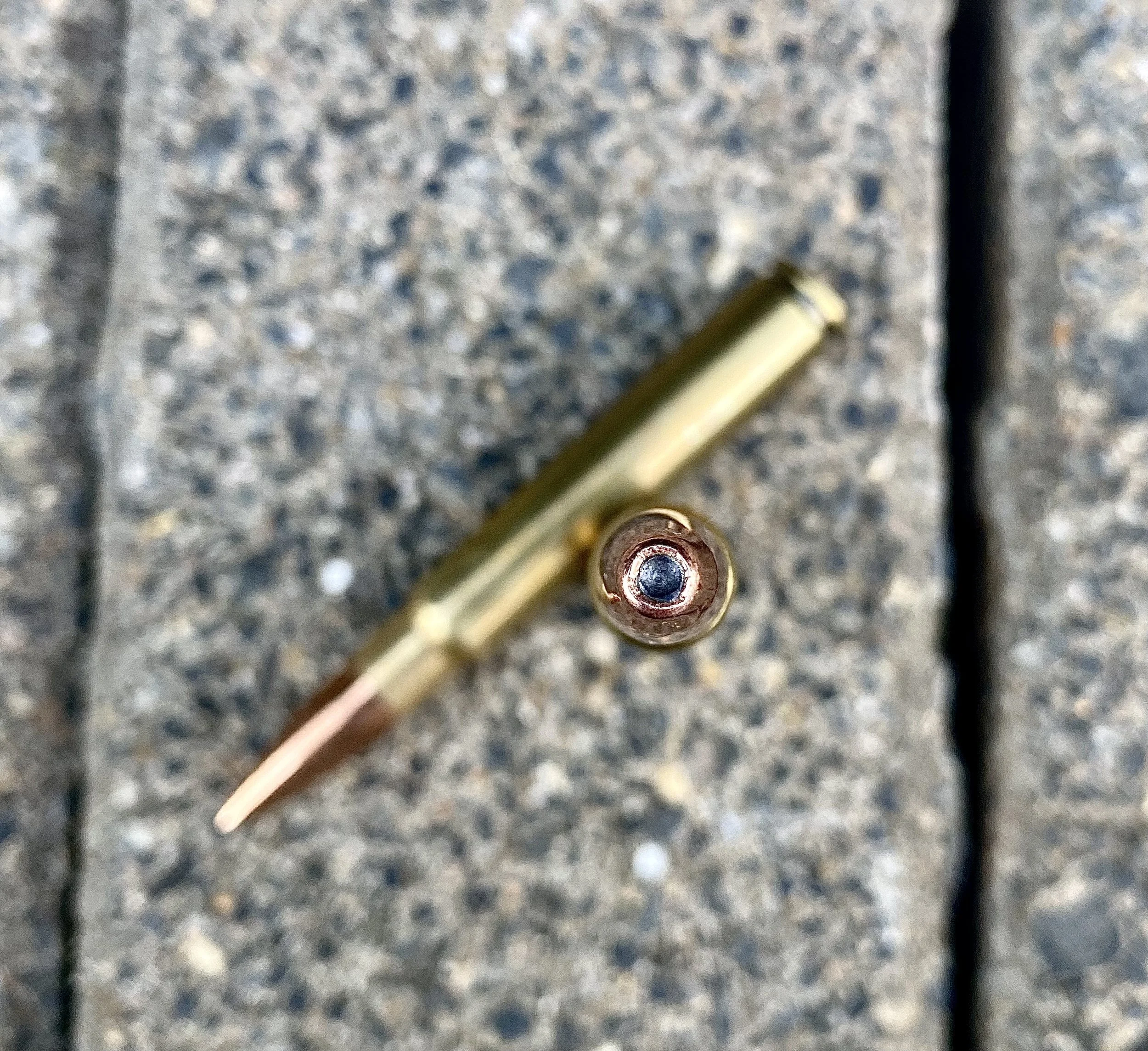Why Choosing Best Deer Hunting Caliber Matters
Deer hunting calibers are not all the same — despite what so many successful hunters say. Choosing the “right” deer hunting caliber (cartridge) can be the deciding factor between “help me drag this back to the truck” and “see if you can find a track or drop of blood or something!”
In this informative report we will outline the important things you should consider when choosing a deer hunting caliber including but not limited to…
Velocity
Energy
Recoil
Handling
Cost and Convenience
Image shows a boy with his first deer. The Mossberg 243 Winchester he's holding proved the best deer hunting caliber for him.
The perfect deer hunting caliber depends on who's shooting it at what and when. This Mossberg in
proved ideal for 12-year-old Rhett Sandquist's first deer hunt.
Ballistic Details Matter But...
While it’s true that too many of us get “lost in the weeds” while considering deer hunting calibers (more precisely, cartridges,) a careful examination of the options really can make a big difference in our shooting success. And it has little to do with the cartridge’s ability to kill deer.
If you read the comments sections in many of my articles about cartridges, calibers, and bullets, you’ll see statements like “It don’t matter!” and “They all work” and “There’s not enough difference between any of these to matter inside of 300 yards.”
But there is. And we do ourselves a disservice if we pretend otherwise.
Image shows a long line of rifle cartridges from 17 Hornet through 470 Nitro Express. All kill deer, but aren't necessarily the best deer hunting caliber.
Rifle cartridges from 17 Hornet through 470 Nitro Express kill deer, but that doesn't mean each is the best deer hunting caliber. But for certain hunters in certain conditions each could be.
Deer Hunting Calibers Can Be Too Big or Small
Yes, it is absolutely true that a 40-grain round nose fired from a 22 Long Rifle can kill a whitetail. And an elk, moose, polar bear, elephant. It’s been done and documented. But only a fool or a poacher with a spotlight would choose to hunt deer with a 22 rimfire.
It’s also true that a 500 Nitro Express can kill a whitetail. But only a fool, a masochist, or showoff would hunt mule deer with a 500 Nitro Express.
And it’s equally true that millions of deer have been introduced to the kitchen table via a 30-30 Winchester, but that hardly makes it the optimum, all-round, best deer hunting cartridge. Millions of deer have also terminated by the 30-06 Springfield, 270 Winchester, 7x57 Mauser, 257 Roberts, 243 Winchester, 7mm Remington Magnum, 300 Win. Mag., and 375 H&H Magnum. But that doesn’t mean any of those are the “best” either. Each may be your favorite or my favorite, but that doesn’t make them universally the best deer hunting caliber.
Photo shows 243 Win., 308 Win., and 30-30 Win. Each is a popular deer hunting caliber.
The 30-30 Winchester on the right could be the best deer hunting caliber for certain hunters under certain conditions, but so could be the 243 Win. and 308 Win. There is more to consider than cartridge alone.
So how do we determine which of the dozens — literally dozens! — of deer hunting cartridges is the best? Or, more importantly, the best for us. Or our significant other, our kids, or our daughter-in-law? Is it the biggest, fastest, hardest hitting, lightest recoiling, flattest shooting? What, for heaven’s sake, is the right answer?
Balance is Key to Best Deer Hunting Caliber
Balance. That’s the right answer. The best deer hunting caliber, cartridge, and rifle for each hunter must strike a balance of the following:
Trajectory: The flatter the better and the less wind drift the better. A slow moving, aerodynamically inefficient bullet that has to be thrown several feet up in order to fall into the target downrange provides absolutely no advantage over one that only needs a few inches of arc.
Bullet Energy: At the target. Muzzle energy is one thing. Remaining energy at the target is quite another. This is why a bullet’s aerodynamic efficiency matters. Round-nose and flat-point bullets may look as if they “hit harder,” but they don’t. They waste too much of their energy fighting wind. Once a soft-nose, hollow-nose, or expanding bullet of any type strikes hair, hide, muscle, and bone, nose shape doesn’t matter. It is instantly changed by the forces of impact.
Photo shows several extra large, powerful cartridges that can easily kill whitetails, but that doesn't make them the best deer hunting caliber.
The 458 Lott, 416 Rem. Mag., 7mm RUM, and 26 Nosler might deliver plenty of energy, but that doesn't mean they are the best deer hunting caliber for you. Yet they might be.
Bullet Shape: This doesn’t sound like a deer hunting caliber option (because you can stuff all kinds of bullets atop the same cartridge,) but some guns require specific bullet shapes for safety. Tubular magazine lever-actions are the classic example. You can’t safely fire a rifle when sharply pointed bullets in its magazine are resting against the primer of another round. Thus the 30-30, 444 Marlin, 45-70 Govt. and similar cartridges designed for tubular magazine rifles have flat-nose or round nose bullets. Those aren’t flat because they “hit harder.” They’d hit harder if they were pointed, which is why the Savage M99 lever-action with a vertically stacked magazine was chambered for 308 Win., 243 Win. and similar “modern” cartridges using efficient, pointed bullets. Bullet shape matters from the muzzle to the target. The sleeker and more aerodynamically efficient the bullet’s shape, the more energy it will retain. And the less it will drop and drift in the wind. It’s just easier to hit your target with a high B.C. bullet. This isn’t a huge deal inside 150 yards or so, but it really costs you beyond that.
Image shows various bullets of different lengths and shapes, all of which play a roll in downrange performance.
The shape of the bullet atop any cartridge plays a huge roll in determining performance downrange. Weight and velocity certainly matter a great deal, but
can aid or hinder both.
Recoil: Your deer doesn’t care how much your rifle recoils. But you care. And if kick you fear, you’ll miss the deer. Don’t make the mistake of hiring a hard-kicking magnum or large caliber to compensate for poor shooting. Because it won’t. A miss is a miss. A gut shot is a gut shot. Better a 60-grain .224 bullet from a mild-shooting 223 Remington in the heart than a 300-grain bullet from any brutally bucking magnum in the belly.
Handling: How a rifle feels in our hands plays a major role in how successfully we can hunt with it. A friend’s wife hunted deer for years with a light-recoiling, flat-shooting 243 Win. and never tagged a deer. She complained the gun was too heavy, too bulky, too slow to get on target. I loaned her a trim, 6-pound bolt-action in 284 Win. She shot her first deer that very day. How easily, quickly, and smoothly we carry, swing into action, and fire our gun are huge parts of the equation. In this age of long range precision and tacti-cool design, too many new hunters overlook balance, weight, and handling characteristics in hunting conditions. Anyone who’s scoured the cluttered woodlands with a light, short, quick-cycling lever-action 30-30 will immediately feel the inefficiency of a 10-pound sniper rifle with a 26-inch barrel. And anyone who’s sat on a high bluff looking across a 400-yard cornfield will feel the inadequacy of a lever-action 30-30.
Image shows hunter aiming lever-action Marlin 45-70. Might no be best deer hunting cartridge, but could be ideal for off-hand shooting in heavy brush..
Marlin's M1895 lever-action in 45-70 Govt.
might not be the best deer hunting caliber or rifle, but for jump shooting offhand in heavy brush, it could be. That cool looking jacket is the
Wildfowler soft-shell in Digital Camo.
Reach: By reach I mean just that. Will your deer hunting caliber of choice have the “reach” to reach your target? If you hunt from a stand where your longest shot is 100 yards or less, literally any cartridge/bullet will be able to reach it. Use a 357 Magnum, 44 Mag., 30-30… Whatever. But if you might need to reach 300 yards or even just 200 yards across a meadow, bean field, or canyon, you’ll be much more successful with a 270 Win., 7mm Rem. Mag. or any other high velocity, flat-shooting cartridge. This is where you reap the benefits of a magnum. It’s not the overly-hyped magnum “killing power” that matters. It’s the extra reach. Those magnum cartridges make it easier to hit targets at long range because their bullets drop and drift less than do slower bullets. If you can handle the recoil, a magnum might be right for your deer hunting caliber.
Cost: A pure assessment of deer hunting caliber performance shouldn’t include costs, but in the real world we must. Why shoot an obscure, superior-performing cartridge that sets you back $3,000 for the rifle and $100 for each box of ammo when you can choose a perfectly adequate, common cartridge chambered in a $500 rifle with an abundance of ammo options in the $20 to $30 per box price range?
Image shows hunter aiming an inexpensive Mossbert Patriot synthetic rifle in 243 Win., the ideal deer hunting caliber and rifle for some folks.
The inexpensive
in 243 Win. might no be your idea of the ideal deer hunting caliber or rifle, but someone on a tight budget might find it perfect.
Aesthetics: Purdy is as purdy does, my proud hillbilly friends Rich and Chris tell me. If you like the looks and feel of a stainless synthetic rifle with an 18.5-inch barrel and dog-leg bolt handle, buy it. If your grandpa’s battered break-action single-shot speaks to you, inspires you to sit for hours despite snow, wind and cold until that buck steps from the swamp, hunt with it. I consider cartridge and bullet performance first, rifle performance and handling second, esthetics third. But a close third. I’ll often “settle” for the inefficiency of a sleek, responsive, beautifully balanced walnut-and-blued Dakota single-shot just because hunting with it gives me such pleasure. Might not be pragmatic, but I don’t care. It’s my party. And my rifle.
Regardless what your friends and all the on-line experts might tell you, it’s your deer hunt. And your perfect deer hunting caliber, cartridge, and rifle.
Image shows a sleek, trim, walnut-blued falling block single shot Dakota M10 rifle that represents the best deer hunting rifle for the author in certain conditions.
You might not think a Dakota M10 single shot in
is the best deer hunting rifle and cartridge, but in certain situations, I do. The esthetics of rifles and hunting can play a major roll in our selection of the perfect deer hunting caliber, cartridge and rifle.
That scope is my lightweight (11.4 oz.) favorite, a
in
Ron Spomer has hunted deer with dozens of rifles, calibers, and cartridges from Alaska to Alabama and knows for a fact that he doesn't know the best deer hunting caliber for all occasions. But he has some ideas...




















